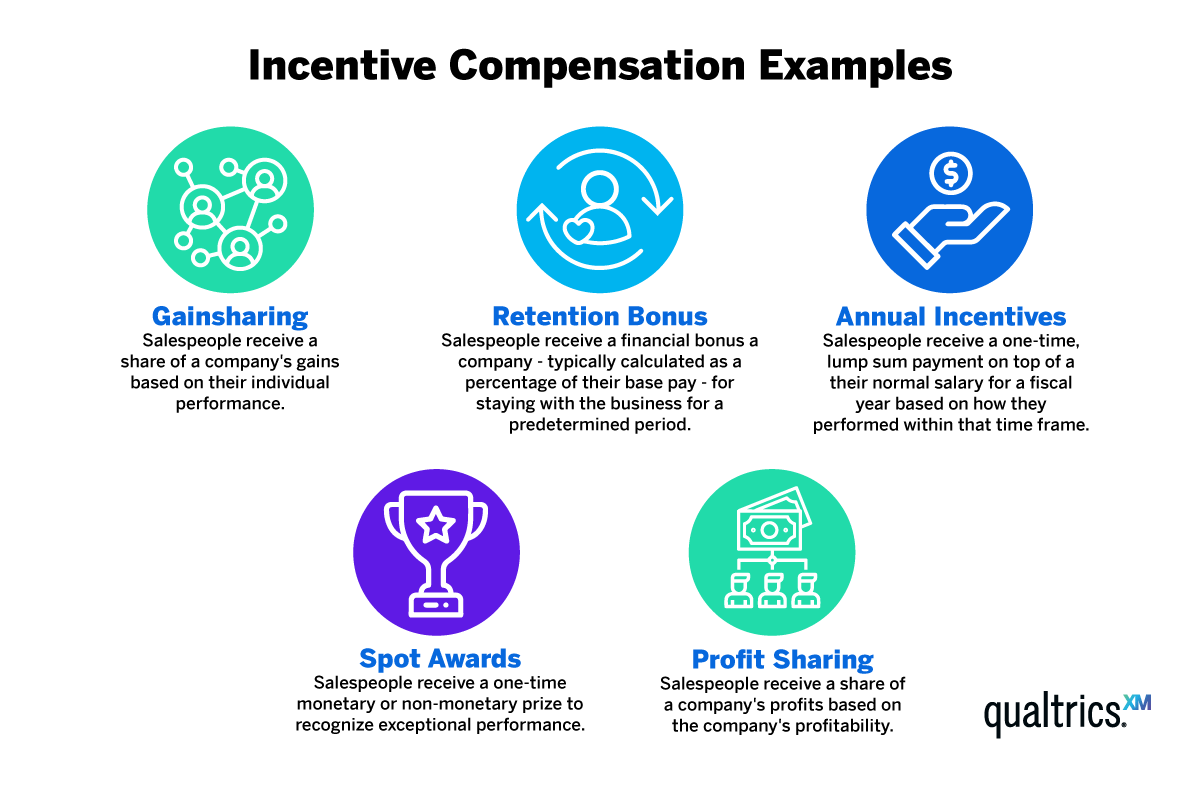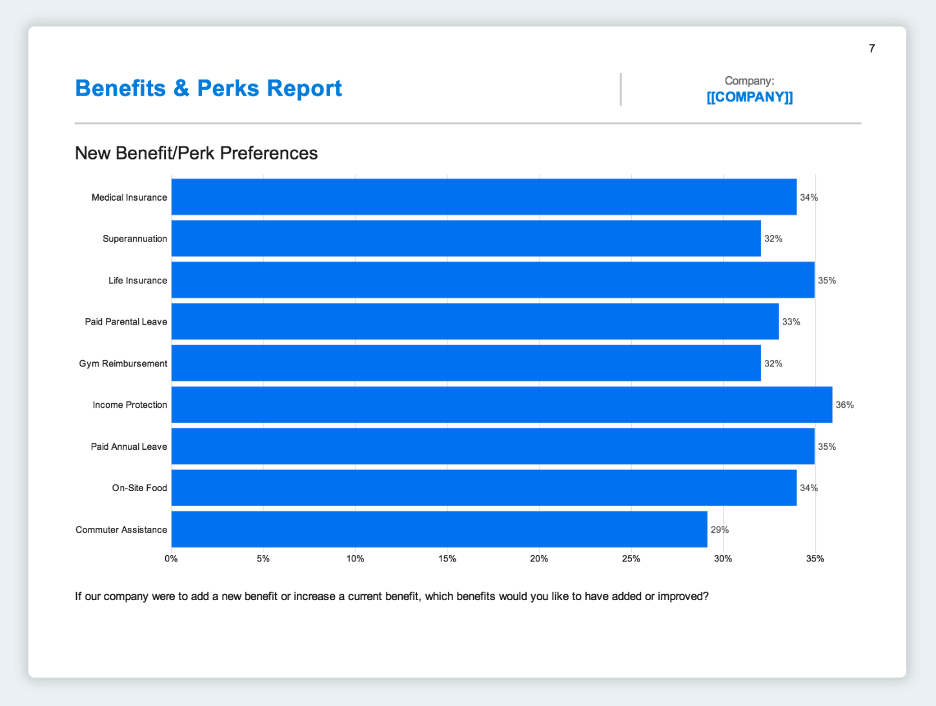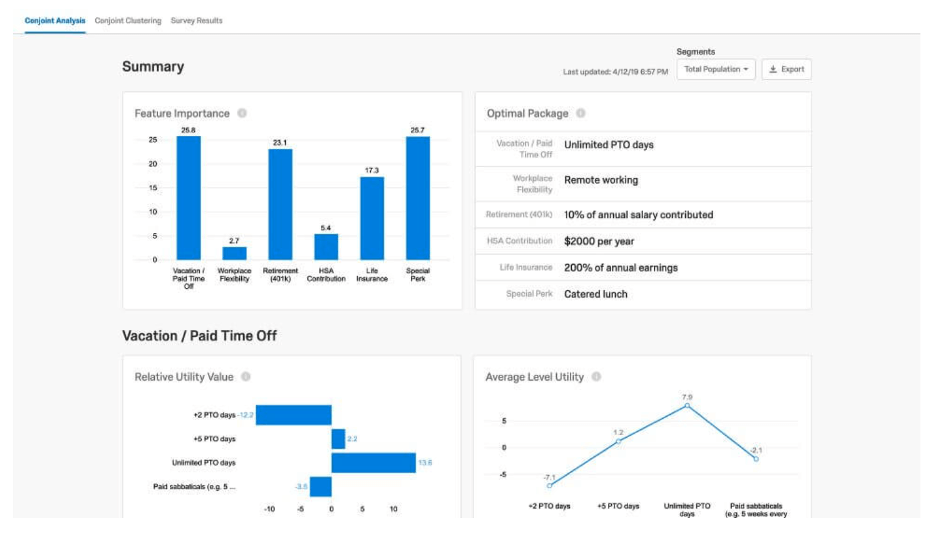Employee incentives definition
First things first – what are employee incentives? Employee incentives are rewards given to employees by employers in order to motivate them and recognize their achievements. They can come in various forms, including
- bonuses
- raises
- discounts
- gifts
- profit-sharing
- events and experiences
- healthcare and other forms of wellbeing support
- tuition funding or reimbursement
- team events and celebrations
All of these types of employee incentives are designed to create a positive work environment and to encourage employee engagement and performance. The list is by no means exhaustive – many businesses come up with innovative and unique ways to incentivize their employees, from bringing your dog to work days to personal development budgets.
Learn more about our Employee Listening software.
Employee incentives vs. employee benefits
So are employee incentives the same thing as employee benefits? Not quite.
Employee benefits
Generally speaking, employee benefits are granted to employees regardless of performance, and are a way of improving the employee experience and creating value for employees. They also have a role in shaping or reinforcing the company culture and enriching working relationships through shared positive experiences. Typically, they are separate from monetary incentives i.e. pay and bonuses.
Employee incentives
Employee incentives are usually tied to performance. They incentivize employees to behave in the way employers prefer. They can be, and often are, monetary rewards, although by no means exclusively. Incentives are selective, being given to only certain employees, and they are conditional on employees’ contribution to company goals.
Employee benefits and employee incentives are both ways to reward employees for the work they do and help employers express to employees that they are valuable and appreciated. Offering incentives for employees can have an impact on employee performance, employee morale, employee retention, and talent acquisition. The same is true of employee benefits.

What are employee incentive programs?
Employee incentive programs are structured, organization-wide systems that are used to manage incentives for employees. Employee incentive programs may also be called employee incentive schemes or employee incentive plans. There are several common types of incentive programs. A company’s approach may consist of any one of these, or a combination.
Employee targets
With this type of employee incentive program, employees receive a reward if they achieve a target, such as a threshold dollar value of sales made or a certain number of tasks completed. Sales commissions are an example of this kind of employee incentive program, and are often cash incentives.
Bonus schemes
Cash bonuses are a form of employee incentive given out for performance during a set time period, usually a calendar year. These incentive programs may be discretionary – meaning the decision to award them is based on subjective judgment from more senior staff members – or non-discretionary, where it’s tied to specific achievements. An incentive pay plan is an example of a non-discretionary bonus scheme.
Profit-sharing
A profit-sharing incentive program means employees benefit when the company prospers. Profits are shared among employees according to a predefined set of rules, which may take into account level of seniority, length of tenure, etc.
Employee stock ownership plans
Offering employees stock in your company has become a popular form of employee incentive program, especially in fast-moving sectors such as tech. Since it usually takes some time before the stock or stock options vest, this type of employee incentive program can also contribute to retaining employees who want to wait for a potentially large monetary reward.
Spot awards
These are ‘thank you’ gestures given to top performers in response to excellent performance of a task or project, or for outstanding handling of a situation. They’re clearly tied to a single event and may not be expected, although knowing that they’re a possibility as part of your incentive programs can help employees feel motivated to work hard.
Gain-sharing plans
Like profit-sharing plans, gain-sharing plans include the employee in a business’ good fortunes. Gain-sharing comes into effect when a company becomes more productive or efficient.
Team incentives
Each team member is rewarded for the work of the group. This can be a good strategy if the individual contributions to the group’s achievements are hard to identify.
Employee retention bonuses (ERBs)
As the name suggests, these are cash rewards offered to top performers in return for staying in the job for a set period of time. Paying to retain employees may not be a long-term solution, but it’s a popular tactic. A reported 81% of the world’s largest companies use employee retention bonuses.
Non-monetary incentives
Although financial incentives are enduringly popular, there are plenty of other employee incentive ideas to consider as part of your rewards program. These may include:
Experiences
An experience that’s provided and in some cases organized by the company is a memorable way to reward employees. Being able to picture a rewarding experience, such as a five-star restaurant meal, spa break or day trip, can motivate employees more powerfully than the idea of monetary bonuses. Even offering gift cards for a specific hotel, store or restaurant can get employees excited, and this excitement can be shared by team members who look forward to sharing the experience with one another.
Wellness benefits
Wellness benefits recognize both employees’ hard work and the need for work life balance. This type of benefit might come in the form of additional paid time off. Note however that necessary adjustments to work arrangements, such as a flexible work schedule, should not be framed as a reward. These are accommodations an inclusive employer makes to help the employee to balance their personal life and to do their job.
Likewise, for some employees benefits like health insurance may be a necessity rather than a reward. An employee should not have to go over and above the normal duties of their job to receive this type of benefit from their employer.
Public recognition
The power of public recognition lies in the nature of human behavior. Employee recognition that is visible to others adds a powerful element of social status to the reward. An employee incentive program that includes this type of recognition incentivizes positive behaviors in an entire team, since it creates an aspiration to achieve the same recognition, and even a competitive element between team members. Many employers, HR leaders and leadership teams include some form of public recognition in their employee recognition programs.
This aspect of your employee incentive program doesn’t have to involve pulling an employee up onto a stage or embarrassing them unduly. Try low-key forms of employee recognition such as an ‘employee of the month’ display, a social media shout-out or even a company-wide newsletter that celebrates top performers.
Professional development opportunities
Employee incentive programs that offer development opportunities are a great way of combining incentives for employees with the kind of upskilling and reskilling which benefits businesses. An incentive program that offers courses, qualifications or learning experiences can motivate employees to learn skills that they will go on to apply in their jobs. It could also help keep employees engaged, since they are actively participating in on-the-job learning in many cases.
Do employee incentive programs work?
A company’s employee incentive activities are based on the idea that rewards drive employee behavior. So is that the case?
Although it’s generally accepted that there is a link between incentives and employee performance, it’s not clear-cut that incentives govern employee behavior or commitment. If your goal is engagement and long-term job satisfaction, it may not be enough simply to offer people a quid-pro-quo deal for putting in effort. Harvard Business Review noted that simply incentivizing behaviors can result in ‘temporary compliance’ but not much else. Temporary compliance is when the behaviors continue only as long as the reward is provided. The incentives can’t change attitudes or behaviors long-term, only deliver superficial and temporary results.
So while you can incentivize behaviors, you can’t necessarily use incentives to drive factors like employee engagement, employee loyalty and intent to stay. At least, you can’t do it with incentives alone. Incentives should sit alongside other contributors to employee engagement, such as belonging, wellbeing, psychological safety and a sense of being able to progress at work.
Create clarity between effort and reward
Providing employee incentives can be effective if it’s done in the right way, according to Forbes. “For incentives to work, they need to be unambiguous and directly tied to a measurable action or achievement. Otherwise, there is too much risk of both underperformance and decreased job satisfaction,” writes Forbes author Fleet Maull.
When an employee perceives a direct link between their effort and their reward, and they are clear about how to get it, they are more likely to feel motivated than if the relationship between reward and hard work is ambiguous.
Another employee incentive pitfall Maull identifies is when the type of reward offered (such as a year-end bonus) feels like an entitlement rather than a privilege. If a year-end monetary incentive is perceived this way within your company culture, employees will be disappointed not to receive it, and neutral if they do get it.
How to design your employee incentive program
5 steps to an effective employee incentive program.
1. Decide on your goals
What do you want your employee incentive program to do for you? For example, do you want to boost employee well-being, encourage employees to work harder, boost employee productivity, or even become more competitive in the job market so you can attract more qualified candidates? Is employee satisfaction part of your plan? How about employee motivation?
Determining your company goals will help you understand what success looks like, and in turn, this will help you measure the effectiveness of your program in the future. Being able to show ROI on your workplace incentives will help make sure you can maintain them in the long term.
2. Find out what employees value
One of the most important aspects to choosing between employee incentive programs is to understand what your employees value, and what will motivate employees the most. This varies from business to business, and of course from employee to employee, so don’t expect to arrive at a one-size-fits-all solution. You may even want to create a flexible package that allows employees to choose their own options from a menu of benefits.
An employee survey is a useful tool for gathering feedback from your employees about the monetary and non-monetary incentives they find appealing and motivating. It can also make them more aware of the options that are available and how they deliver value, making the rewards themselves more appealing to employees.

3. Weigh up your options
After you’ve canvassed your employees for their views, it’s time to think about the practicalities of running your employee incentive program. Cost things out to make sure the plan is sustainable over the long-term. As well as monetary incentives, look at non-monetary incentives such as wellness incentives, additional paid time off, and professional development.

4. Gather feedback
Ask employees to contribute their feedback on possible incentive plans. You can use tools like conjoint analysis to help narrow down the most appropriate package of options for them, at the lowest cost to your company. Conjoint analysis allows respondents to weigh up different options against each other, and helps you determine which elements of a package are considered the most valuable to employees, independent of the dollar value the rewards will cost you.
5. Maintain and update your employee incentive program
Over time, priorities among your employees will change and different incentives will hold more or less appeal. There may be new options available, or changes to prevailing trends in what employees expect. For all these reasons it’s important to keep collecting feedback on your employee incentive program, so that you can update it to reflect what is most effective for your teams. This will help you make sure your incentives for employees stay as effective as possible, giving you the best value for your investment.
Begin optimizing employee benefits today with Qualtrics